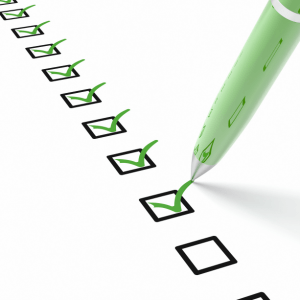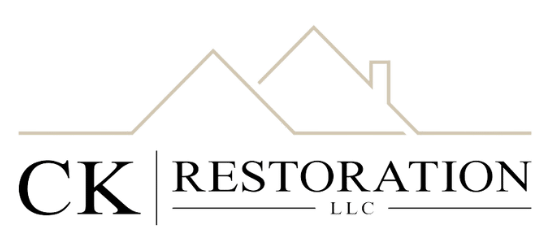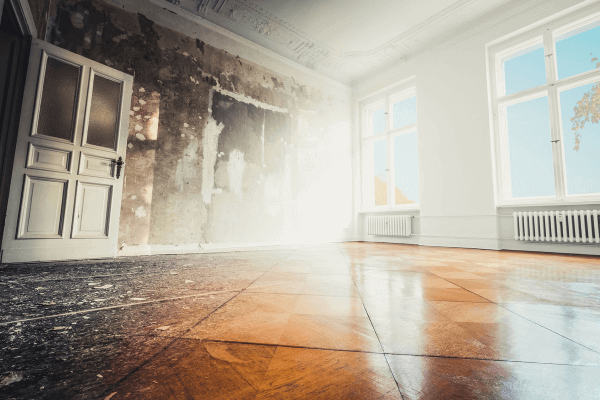Water damage can feel like a nightmare for any homeowner. Whether it’s a burst pipe, an unexpected flood, or a leaky roof, dealing with water intrusion can be stressful and overwhelming. At CK Restoration, we understand the urgency of these situations and are committed to guiding you through the restoration process with ease and expertise.
In this comprehensive guide, we’ll break down everything you need to know about water damage restoration, from understanding the types of water damage to navigating the insurance process and avoiding common pitfalls. Our goal is to empower you with the knowledge you need to tackle water damage head-on and ensure your home remains a safe haven for you and your family.
What Is Water Damage?

Water damage refers to the destruction caused by the intrusion of water into areas of your home where it doesn’t belong. This can lead to structural issues, mold growth, and damage to personal belongings. Common causes of water damage include:
- Burst or leaking pipes
- Flooding from heavy rains or storms
- Appliance failures, like overflowing washing machines
- Roof leaks
Types of Water Damage
Water damage is categorized into three types based on the source and level of contamination:
- Category 1 (Clean Water): Water from a clean source, such as a broken pipe. This type is generally safe and poses minimal health risks.
- Category 2 (Grey Water): Water containing some level of contamination, such as water from appliances like dishwashers. It may cause discomfort or illness if ingested.
- Category 3 (Black Water): Highly contaminated water from sources like sewage backups or flooding. This type poses serious health risks and requires immediate professional intervention.
For more details, check out our post on What Category Water Damage Are You Battling- 1, 2, or 3?
Recognizing the Signs of Water Damage

Early detection of water damage can save you time, money, and stress. Here are some common signs to watch for:
- Water Stains: Look for discoloration on ceilings and walls, which can indicate leaks.
- Mold Growth: If you notice mold in areas like the bathroom or kitchen, it may be a sign of hidden water damage.
- Musty Odors: A persistent musty smell often indicates moisture buildup.
- Peeling Paint or Wallpaper: This can signal underlying water issues affecting your walls.
Insurance Insights
Understanding your insurance policy can help alleviate some stress during a water damage crisis. Most homeowners insurance policies cover water damage from sudden incidents, like burst pipes. However, coverage may vary for flood damage, which often requires a separate policy.
For a deeper dive, check out our post on Does My Homeowners Insurance Cover Water Damage?
The Water Damage Restoration Process
When water damage strikes, swift action is crucial. Here’s a step-by-step breakdown of the restoration process:
Step 1: Emergency Response
- Shut Off the Source: If possible, turn off the water supply to prevent further damage.
- Call CK Restoration for immediate assistance.
Step 2: Assessment and Inspection
- Our team will assess the extent of the damage and identify the source, ensuring we develop a targeted restoration plan.
Step 3: Water Extraction
- We use specialized equipment to remove standing water quickly and efficiently.
Step 4: Drying and Dehumidification
- Thorough drying is essential to prevent mold growth. Our team uses high-powered fans and dehumidifiers to remove moisture from the air and surfaces.
Step 5: Cleaning and Sanitizing

- We clean and disinfect affected areas to eliminate contaminants and reduce health risks.
Step 6: Restoration and Repairs
- Finally, we’ll repair or replace damaged materials, restoring your home to its pre-damage condition.
For a detailed breakdown, read our post Step-by-Step Guide to the Water Damage Restoration Process
Common Mistakes to Avoid
Water damage restoration can be tricky, and homeowners often make mistakes that can complicate the process. Here are some pitfalls to avoid:
- Delaying Action: The faster you act, the less damage you’ll face. Don’t wait to call for help!
- Ignoring Insurance: Failing to understand your coverage can leave you unprepared for unexpected costs.
- DIY Cleanup: While some tasks are manageable, extensive damage should always be handled by professionals to ensure safety and effectiveness.
To learn more, check out our post on Avoid These 10 Flood Damage Cleanup Mistakes.
Additional Resources and Tools
Consider using the following resources to assist you during the restoration process:
- Moisture Meters: These can help you identify hidden moisture in walls and floors.
- Sump Pumps: Useful for preventing flooding in basements.
- Water Leak Detectors: These devices can alert you to leaks before they become significant problems.
The Cost of Water Damage Restoration
Understanding the costs involved in water damage restoration can help you budget effectively. Costs can vary based on the extent of the damage, materials needed, and labor. Typical factors include:
- Size of the affected area
- Type of water damage
- Required repairs and restoration work
It’s essential to get a detailed estimate from your restoration company, so you’re aware of what to expect.
Long-Term Impact of Water Damage
Water damage can have lasting effects on your home, including structural damage, mold growth, and decreased property value. The key to minimizing these impacts is timely restoration. Ignoring water damage can lead to more extensive and costly repairs down the road.
Choosing the Right Restoration Company
When faced with water damage, choosing the right restoration company is crucial. Here are some tips:
- Check Credentials: Ensure the company is licensed and insured.
- Read Reviews: Look for customer testimonials and reviews to gauge their reputation.
- Ask About Experience: A company with extensive experience in water damage restoration will likely have the expertise needed to handle your situation.
At CK Restoration, our veteran-led team is known for meticulous attention to detail and high-quality craftsmanship. We’re committed to supporting you throughout the restoration process.
Tips for Preventing Future Water Damage

Prevention is always better than cure! Here are some tips to help you minimize the risk of future water damage:
- Regular Inspections: Check for leaks in plumbing, roofs, and appliances regularly.
- Maintain Gutters: Clean your gutters to prevent water backup.
- Install Water Detectors: Use leak detectors in high-risk areas like the basement and laundry room.
Frequently Asked Questions (FAQ)
What should I do immediately after discovering water damage?
Act quickly! Shut off the water source, contact a professional restoration service, and document the damage for insurance claims.
How long does the restoration process take?
The duration varies based on the extent of the damage. A small leak may take a few days, while significant flooding could take weeks.
Can I stay in my home during restoration?
It depends on the extent of the damage. Your restoration company will assess the situation and advise you accordingly.
Water Damage Restoration Checklist for Homeowners

Immediate Actions:
Shut off the water source to prevent further damage.
Turn off electricity in the affected area (if safe to do so).
Document the damage with photos for insurance claims.
Assess the Damage:
Identify the source of water damage.
Check for visible signs of damage, such as stains or mold.
Contact Professionals:
Call CK Restoration or a reputable water damage restoration company.
Discuss the extent of the damage and schedule an inspection.
Begin Cleanup:
Remove furniture and personal items from the affected area.
If safe, start removing standing water using mops or buckets.
Drying Process:
Set up fans and dehumidifiers to promote drying.
Open windows (if weather permits) for ventilation.
Inspect for Mold:
Keep an eye out for any signs of mold growth.
If mold is detected, consult professionals for remediation.
Follow Up:
Review your homeowners insurance policy and file a claim if necessary.
Stay in communication with your restoration company throughout the process.
Prevent Future Issues:
Schedule regular inspections for plumbing, roofs, and appliances.
Maintain gutters and downspouts to ensure proper drainage.
Your Path to a Dry and Safe Home

Water damage restoration can be overwhelming, but with the right knowledge and resources, you can navigate the process confidently. Remember that timely action and professional support are key to restoring your home effectively.
Don’t Wait—Let CK Restoration Help You Reclaim Your Space
If you’re facing water damage or have questions about the restoration process, contact CK Restoration today for a free consultation! Our dedicated team is here to help you every step of the way, ensuring your home remains a safe haven for you and your family.
Resources:
National Weather Service- Flood Safety & Preparedness
National Flood Insurance Program (NFIP)
American Red Cross – Emergency Preparedness

